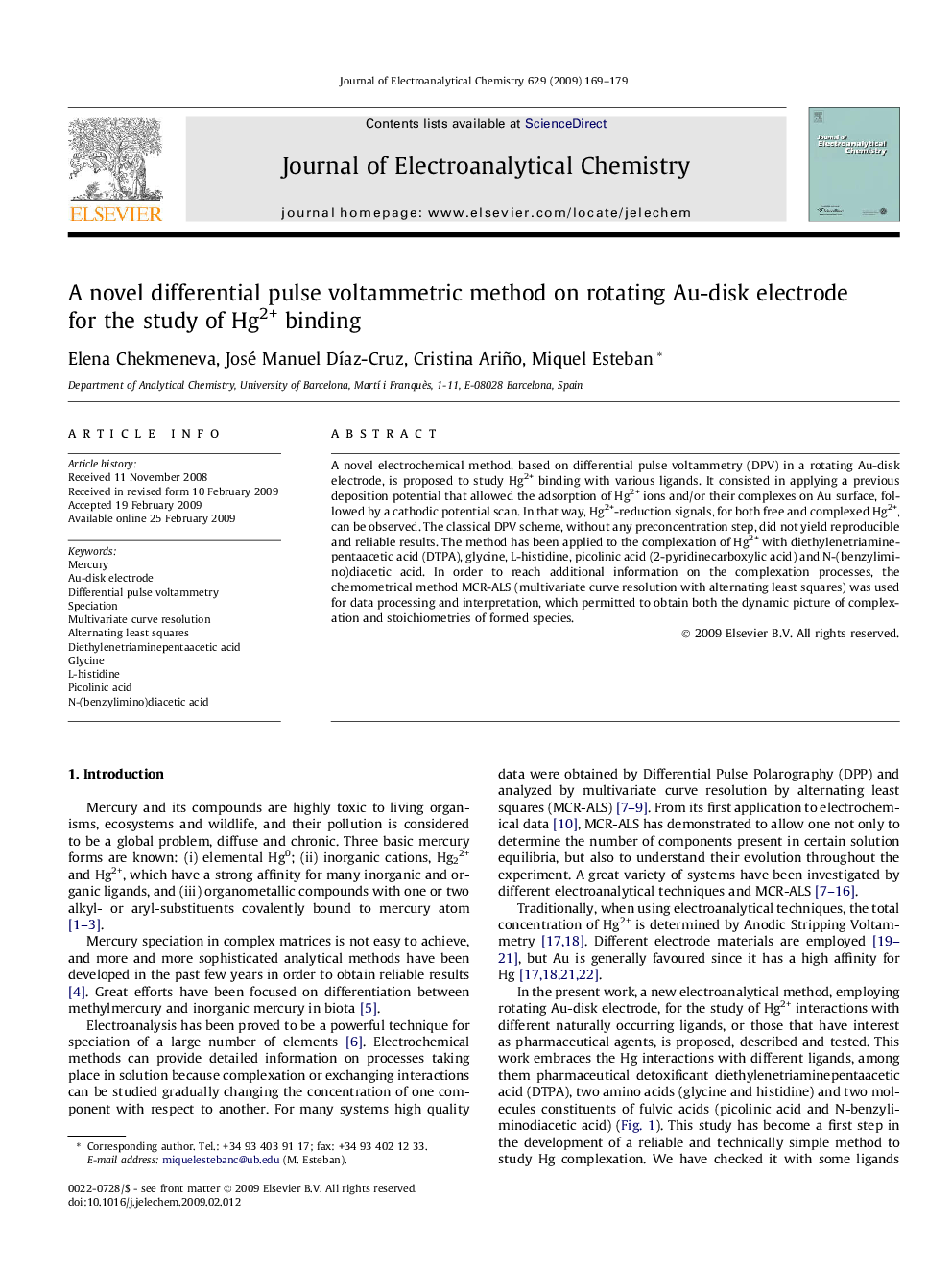| Article ID | Journal | Published Year | Pages | File Type |
|---|---|---|---|---|
| 220505 | Journal of Electroanalytical Chemistry | 2009 | 11 Pages |
A novel electrochemical method, based on differential pulse voltammetry (DPV) in a rotating Au-disk electrode, is proposed to study Hg2+ binding with various ligands. It consisted in applying a previous deposition potential that allowed the adsorption of Hg2+ ions and/or their complexes on Au surface, followed by a cathodic potential scan. In that way, Hg2+-reduction signals, for both free and complexed Hg2+, can be observed. The classical DPV scheme, without any preconcentration step, did not yield reproducible and reliable results. The method has been applied to the complexation of Hg2+ with diethylenetriaminepentaacetic acid (DTPA), glycine, L-histidine, picolinic acid (2-pyridinecarboxylic acid) and N-(benzylimino)diacetic acid. In order to reach additional information on the complexation processes, the chemometrical method MCR-ALS (multivariate curve resolution with alternating least squares) was used for data processing and interpretation, which permitted to obtain both the dynamic picture of complexation and stoichiometries of formed species.
